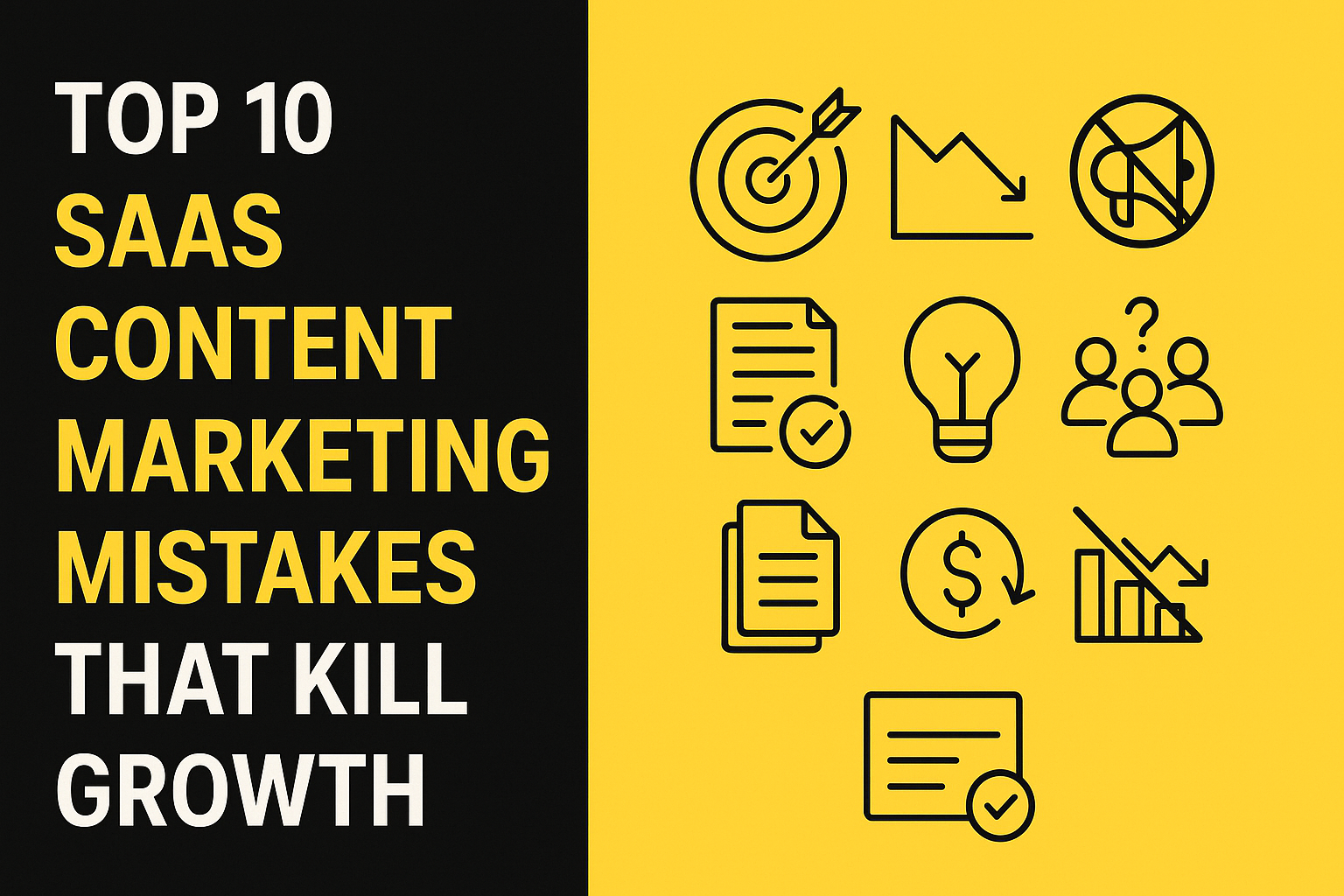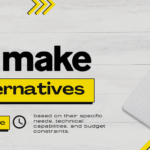SaaS founders and marketers are investing more into content than ever before — but most aren’t seeing ROI. Why? Because good content isn’t about churning blog posts. It’s about strategy, distribution, conversion, and constant iteration. Many people make content marketing mistakes and also often confuse themselves between SEO vs. Content Writing. SEO is a different topic altogether and there are many modern SEO writing tips as SEO has considerably evolved with the introduction of AI.
In SaaS, content isn’t a nice-to-have—it’s a core growth lever. But most startups either underinvest, misfire, or scale the wrong things. These are the 10 deadliest content marketing mistakes I see time and again, especially among early-stage SaaS companies trying to grow traffic and generate leads.
1. Writing for Keywords, Not Customers

The mistake:
Chasing high-volume keywords without understanding your buyer’s journey or actual intent. Content teams get fixated on rankings, writing shallow “what is” blogs just to tick the SEO box.
Why it kills growth:
Ranking means nothing if your content doesn’t move users toward conversion. You end up attracting the wrong audience—or worse, confusing your ideal buyers with generic fluff.
Fix it:
Start with your ICP (ideal customer profile). What are they trying to solve? Map that to the funnel. Then identify keywords that align with actual purchase triggers—not just traffic. Real growth comes from strategic targeting, not broad visibility.
2. Ignoring Product-Led Content
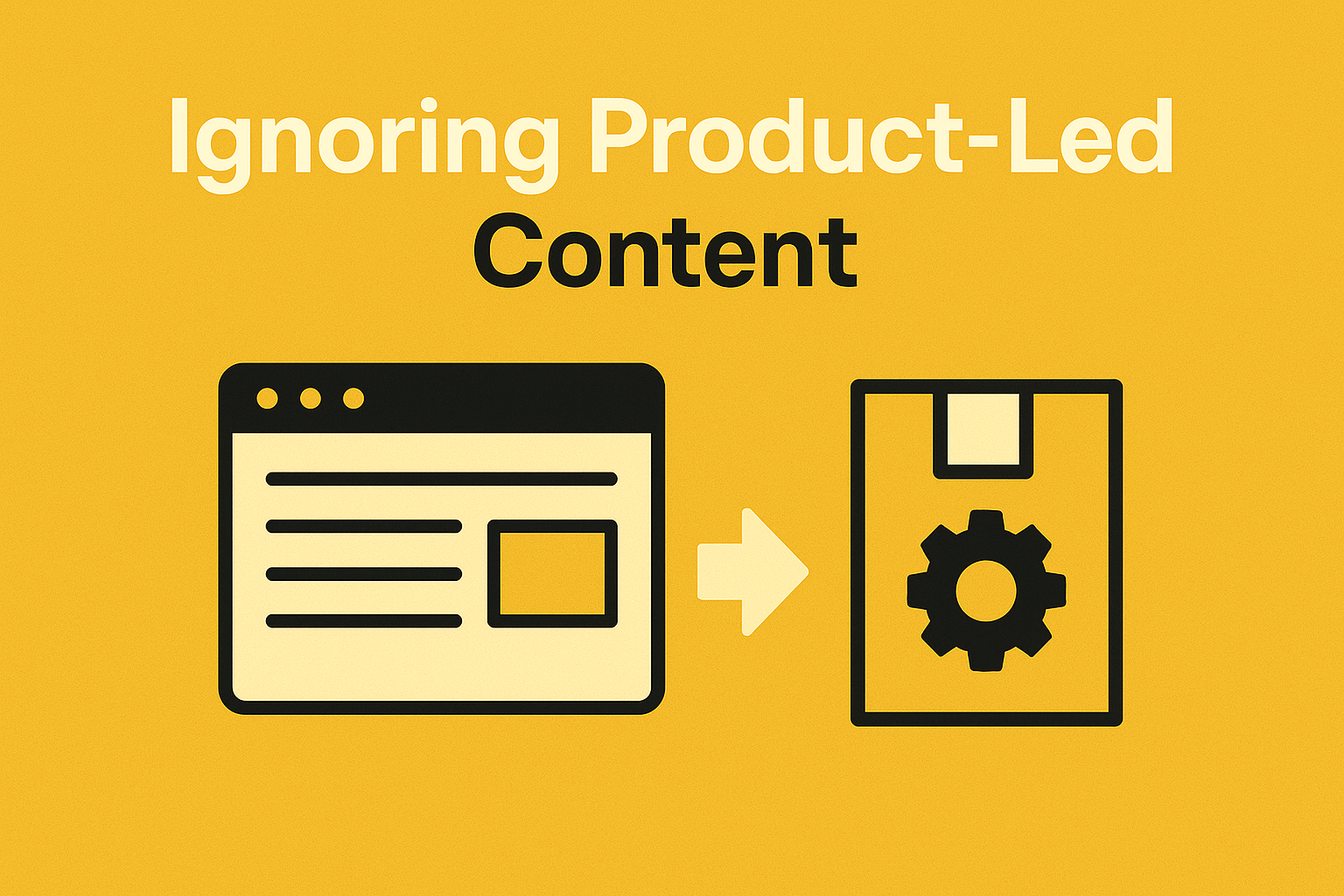
The mistake:
Many SaaS marketers avoid showcasing their product in content, worried it might feel “too promotional.”
Why it kills growth:
If you don’t show how your product fits into the solution, you leave it to the reader to connect the dots. Most won’t. Especially for bottom-of-funnel readers, product-led content is how they visualize your solution solving their problem.
Fix it:
Create content that organically features your product: tutorials, product-led SEO, customer use cases, and even competitive comparisons. Make your product part of the narrative—especially when it fits naturally into solving a specific pain.
3. No Strategy for Bottom-of-Funnel (BOFU) Content
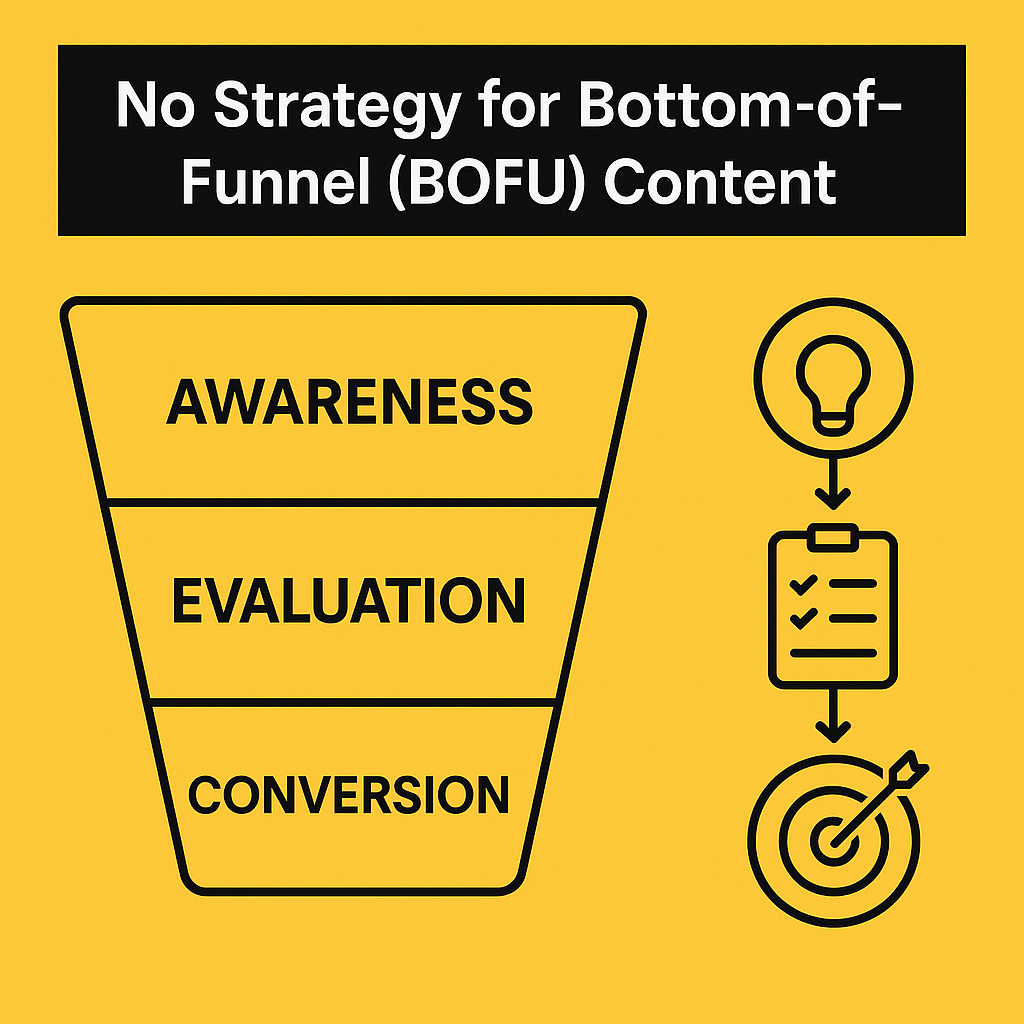
The mistake:
Your blog is full of educational content, but there’s nothing for readers who are ready to evaluate or buy.
Why it kills growth:
TOFU content builds awareness, but without BOFU content, you’re creating traffic with no conversion path. And you miss out on users searching things like “Best [category] software” or “[Competitor] alternatives.”
Fix it:
Invest in BOFU content formats:
- Comparison pages (You vs. Competitor X)
- Integrations (how your product works with Tool Y)
- Case studies tied to real results
- “Why [Product]” and pricing breakdowns
These are the pages that turn traffic into leads.
4. Not Repurposing Content Across Channels
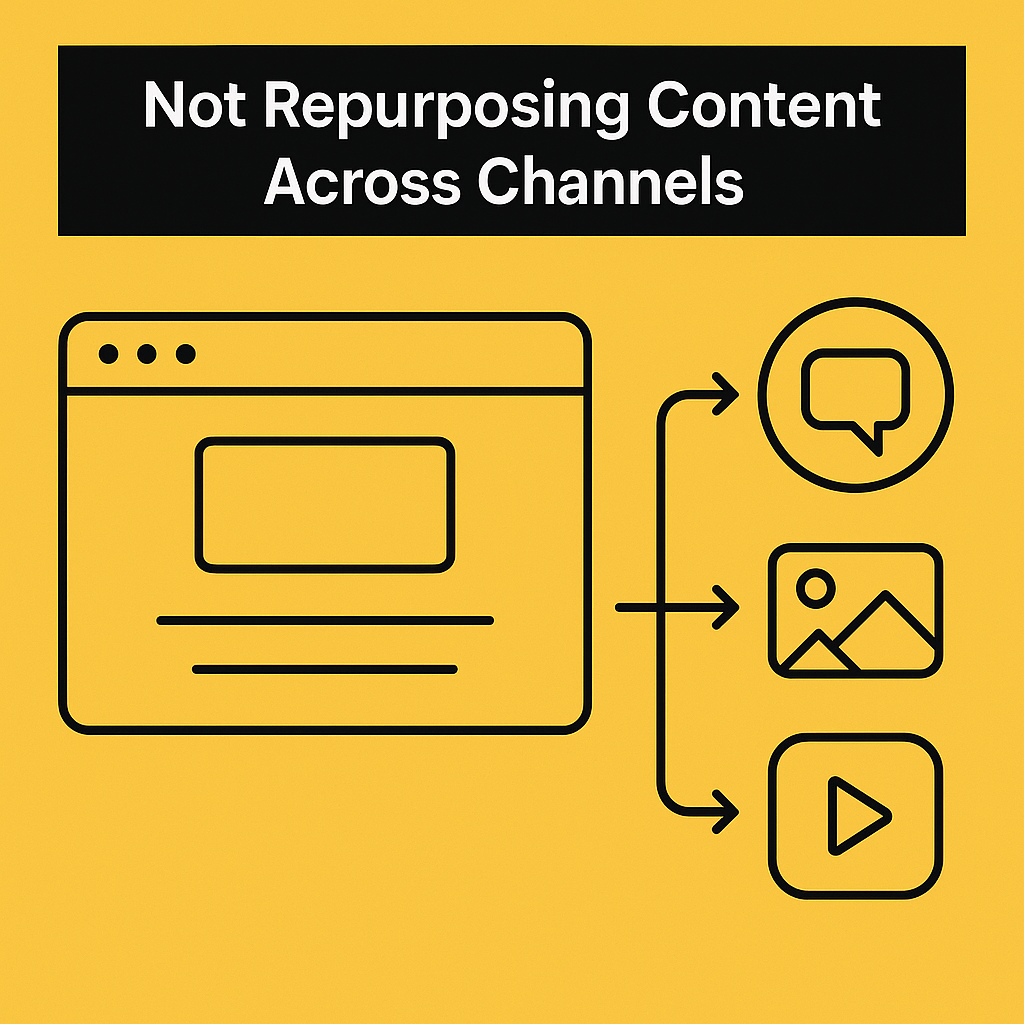
The mistake:
Publishing a blog and calling it a day.
Why it kills growth:
You’re sitting on a goldmine of content that could perform across platforms—if only you repackaged it. Without this, your content lifespan is short, and your reach limited.
Fix it:
Repurpose every core asset into 5–10 micro-formats:
- Blog → Twitter/X threads, LinkedIn carousels, video scripts
- Webinar → Short clips for YouTube Shorts, TikTok, and Instagram
- Internal sales decks → Visual assets for case studies
Extend your reach, reinforce your messaging, and meet people where they actually are.
5. Treating Content Like a One-Time Project
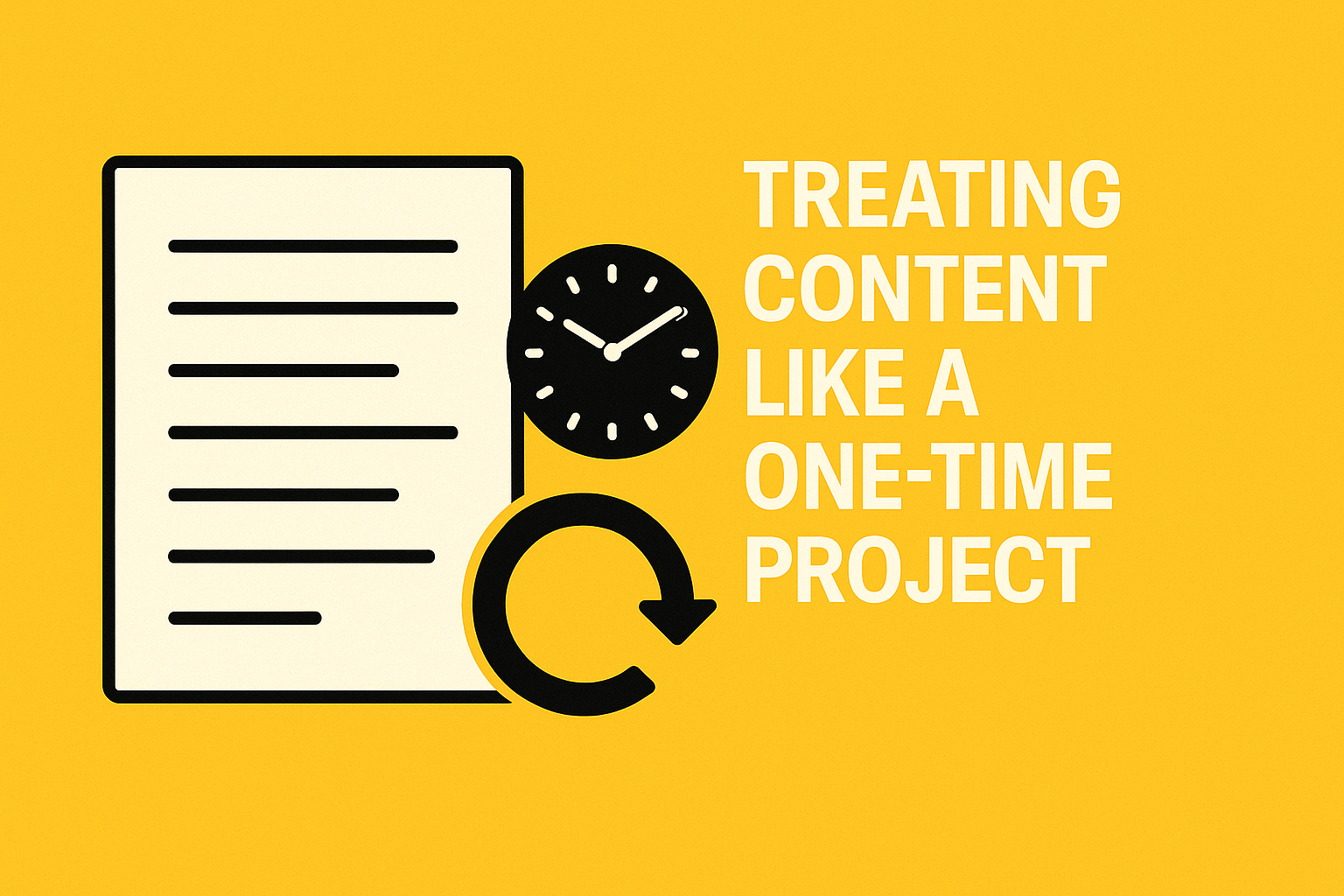
The mistake:
You write something once and move on, assuming it’ll just keep ranking and converting forever.
Why it kills growth:
SaaS content decays. Rankings drop, competitors update, messaging evolves. Leaving your content untouched means it becomes outdated and less relevant.
Fix it:
Implement a content refresh cycle every quarter. Prioritize by traffic, conversion, and keyword position. Update stats, screenshots, CTAs, and structure. Make it a system, not an afterthought.
6. No Real Distribution Strategy
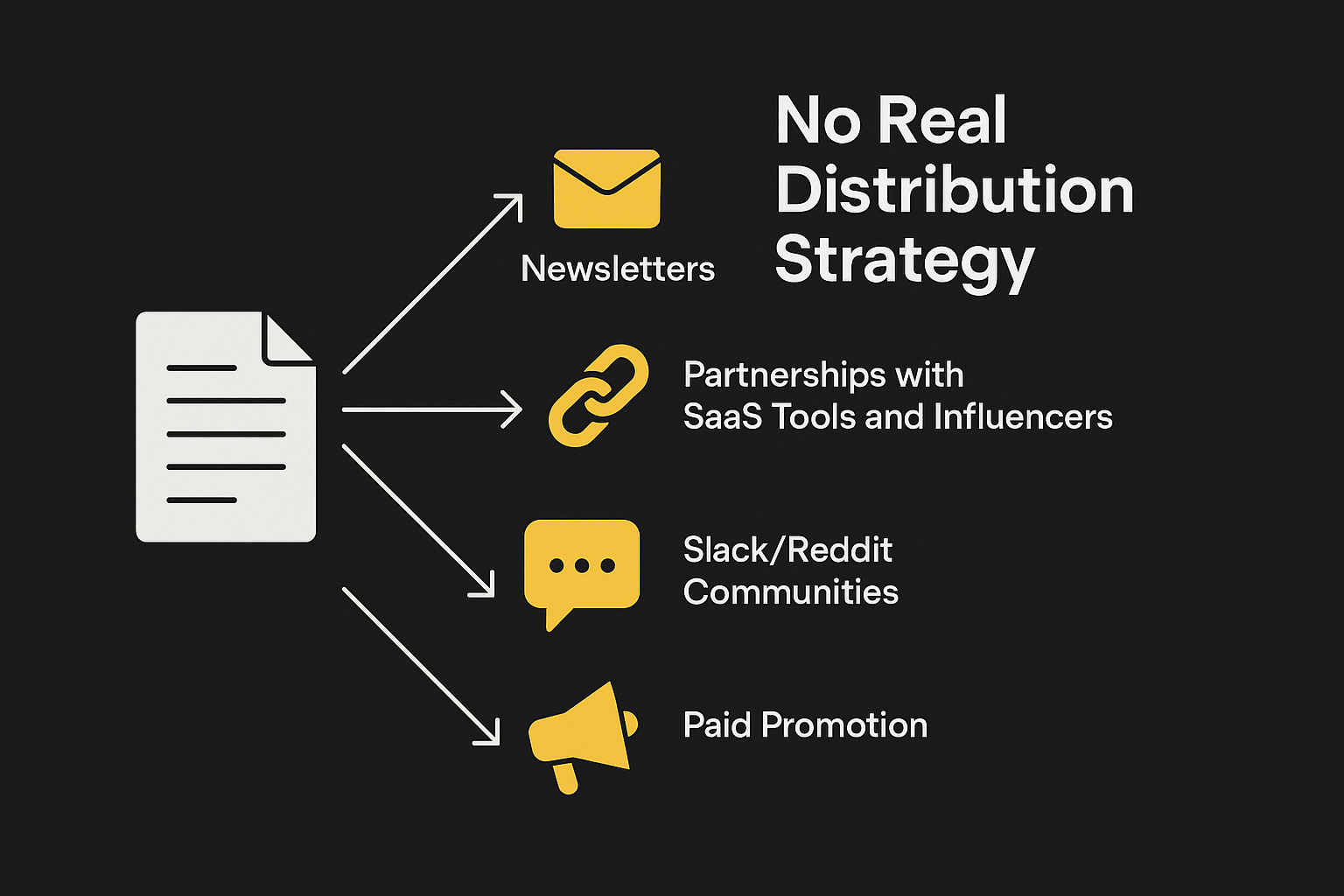
The mistake:
“Write it, post it, tweet it once” is not a strategy—it’s content suicide.
Why it kills growth:
Even great content won’t succeed if no one sees it. Relying only on organic reach or SEO leaves you exposed to algorithm shifts and low visibility. With the introduction of AI, SEO vs. AI is not the primary concern anymore as they have evolved together.
Fix it:
Build a real distribution machine:
- Use newsletters to resurface content
- Create partnerships with aligned SaaS tools or influencers
- Join niche Slack/Reddit communities
- Use paid promotion to push your best assets
Think like a media company, not just a blog.
7. Not Measuring What Matters
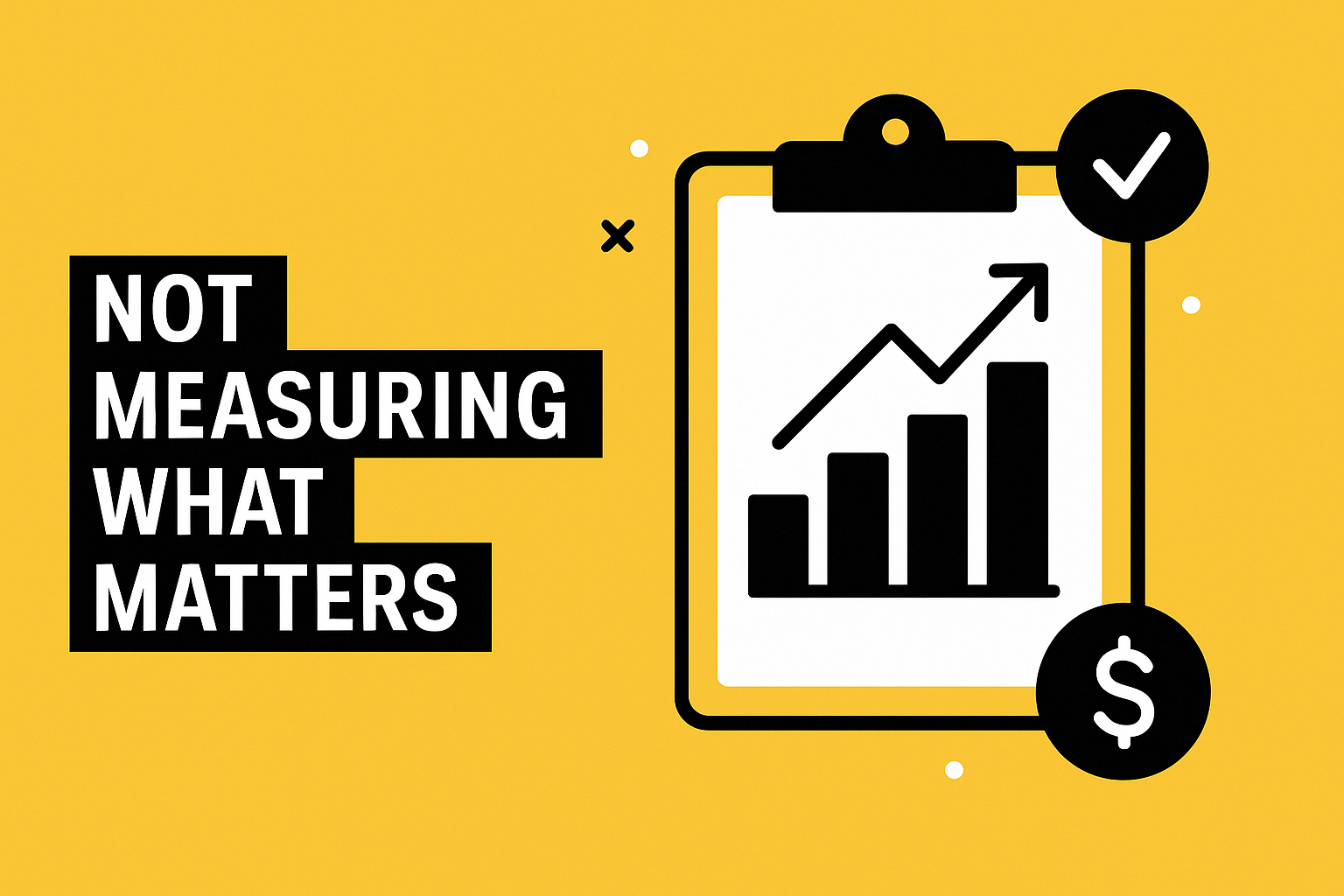
The mistake:
You look at vanity metrics—pageviews, impressions, bounce rate—but ignore the metrics that tie to growth.
Why it kills growth:
Without attribution, you don’t know what’s working. You can’t justify your budget, and you can’t optimize what you don’t track. Homepage and Landing page are the heart of the website, they also influence the bounce rate.
Fix it:
Measure like a growth marketer:
- Content-assisted conversions
- Demo/trial form fills by entry page
- First-touch to closed-won journey
Set up UTMs, integrate your CMS with CRM, and build a basic attribution model.
8. Creating Content Without Sales Enablement in Mind

The mistake:
Marketing creates content in a silo, while sales struggles to close deals without solid assets.
Why it kills growth:
Sales and marketing misalignment means missed opportunities, inconsistent messaging, and slower sales cycles.
Fix it:
Loop in your sales team. Build competitor one-pagers, ROI calculators, pitch decks, objection-handling content, and “send this to your boss” email templates.
Great content should help close deals.
9. Relying Too Heavily on AI Content Tools
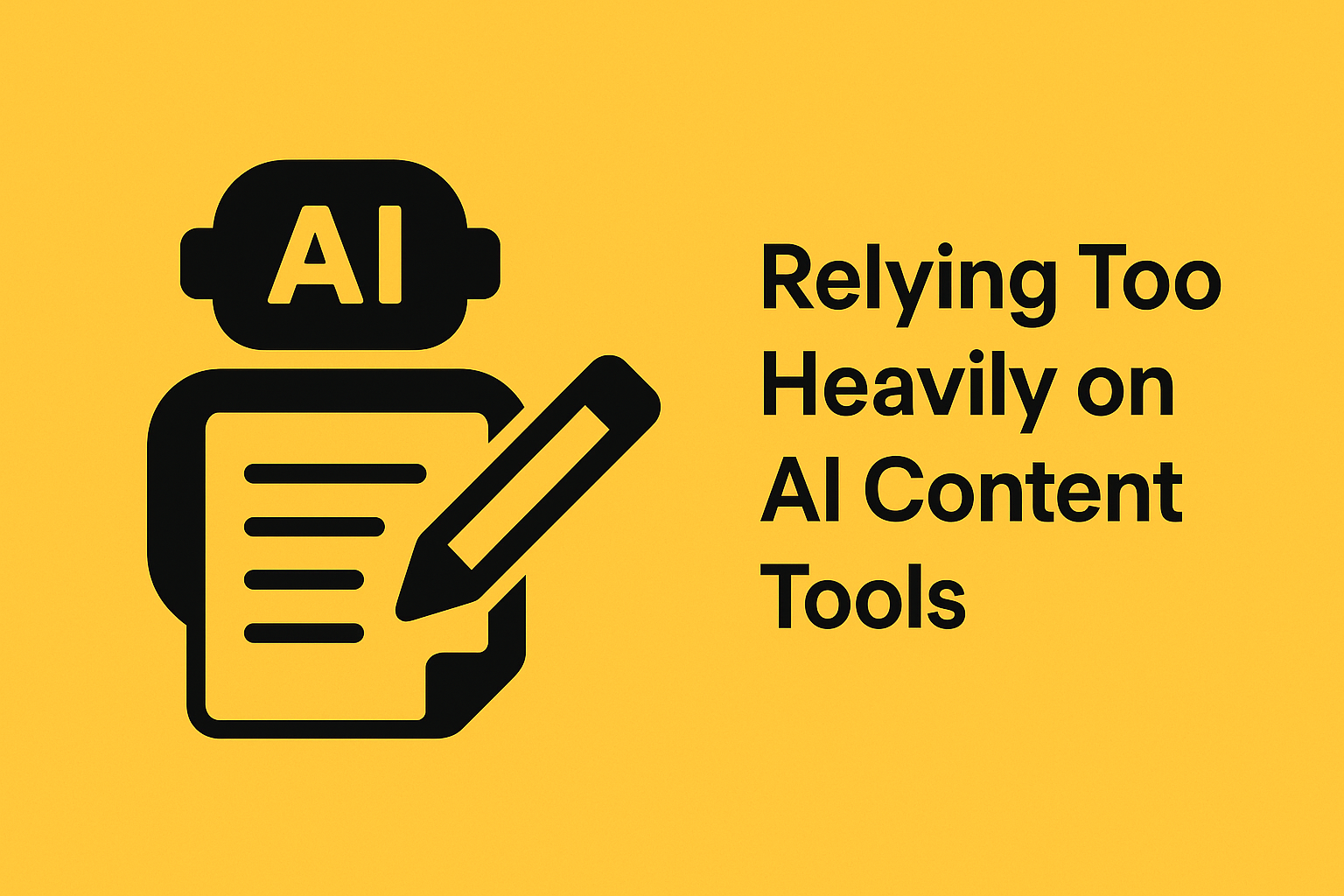
The mistake:
You let AI do all the writing, and end up publishing copycat content.
Why it kills growth:
AI is great at mimicking what already exists—not creating what’s unique or high-converting. Your brand ends up sounding like everyone else.
Fix it:
Use AI as an accelerator, not a replacement. Let it help with outlines, first drafts, data summaries—but inject your voice, expertise, and storytelling. Every wesbite needs a blog but it needs to be done the right way.
Think of AI as a junior writer, not the strategist.
10. Underestimating the Power of Design & UX

The mistake:
You write amazing content, but it’s buried in poor formatting, ugly visuals, or hard-to-navigate layouts.
Why it kills growth:
If your page looks like a 2005 blog, readers bounce. If CTAs are hard to find, they don’t convert. Design directly affects time-on-page, scroll depth, and conversion rates.
Fix it:
Treat every piece of content like a landing page:
- Clean typography and hierarchy
- Visuals that explain, not decorate
- Mobile-first layouts
- Embedded CTAs and scroll-based offers
Good design doesn’t just make things pretty—it boosts performance.
Final Thoughts: Content Is a Strategic Asset, Not a Side Task
Effective SaaS content marketing requires discipline, data, and empathy. Avoiding these mistakes will not only protect your growth—it will help accelerate it with less effort over time.
Key Action Plan:
- Audit your existing content across these 10 points.
- Prioritize fixes with the biggest traffic or conversion impact.
- Create a unified content strategy aligned to your product and buyer.

